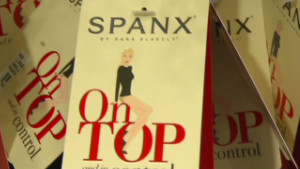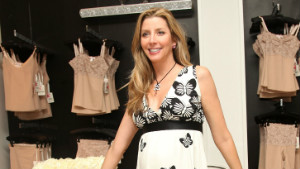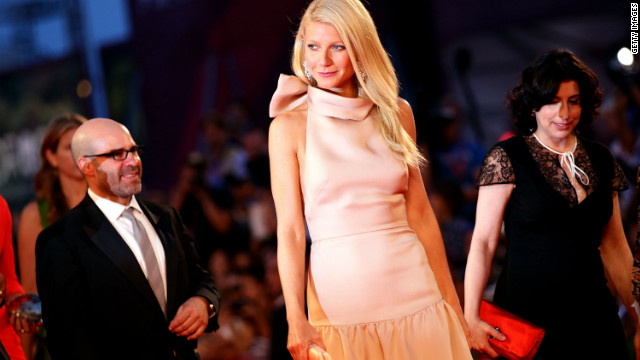STORY HIGHLIGHTS
- British pop star Adele wore four pairs of Spanx at the Grammys
- Orit Avishai: Girdle-like garments were symbols of oppressive beauty standards
- She says embracing shapewear gives women an impoverished sense of empowerment
- Avishai: We can blame ourselves for supporting the very object that constrains us
Orit Avishai is an assistant professor of sociology at Fordham University. She is the author of "Managing the Lactating Body: The Breast-Feeding Project and Privileged Motherhood."
Adele, who won big at the 2012 Grammys, once told Karl Lagerfeld off when he said that she was talented and pretty but a little too fat. Maybe his words got to her.
The British pop star made news this week when she admitted to wearing four pairs of Spanx under a dress that wowed the audiences at the Grammys. Apparently, this was an improvement over her original dress that featured a built-in corset and in which she passed out when she tried it on.
Spanx is a line of undergarments that offers solutions for women of all sizes and shapes. You can target bulging stomachs, jiggling upper arms, aging breasts and any other body part that may need some enhancement. No longer an item of fantasy play or a secret amongst plus-sized women, Spanx products have become prized accessories flaunted by the Kardashians, Oprah and suburban moms.
Spanx's selling point is that it helps smart, successful women of all ages to build their confidence by, well, looking good. But playing with fire might be a more adequate metaphor when we consider that less than half a century ago, women denounced Spanx-like garments as symbols of oppressive beauty standards.

Orit Avishai
When women got rid of girdles and garter belts en masse in the 1960s, they didn't only reject restricting undergarments. (And restrict they did; it's hard to ride a bike, perform surgery or even breathe, as Adele learned, when your midsection is squeezed tight).
They also rejected a society in which women were underemployed, underpaid and underappreciated. Throwing away girdles and curlers seemed like the dawn of a new era. Women got jobs, demanded equal pay and learned to be as tough as their male peers.
 Spanx founder makes billionaires list
Spanx founder makes billionaires list  Spanx slips owner into billionaire club
Spanx slips owner into billionaire club
Fifty years later, the girdle-like Spanx is back thanks to Sara Blakely, a brilliant woman who built a multimillion empire. Blakely used $5,000 to start a brand that defines its category, shapewear. She owns 100% of a company that turns a handsome profit. She is the youngest female self-made billionaire in the world. She would be a darling of the women's movement if her innovation wasn't antithetical to everything else it stood for.
The twist is that Spanx prides itself on empowering women.
The tagline for its In-Power panties that promise to whittle your waist, firm your figure and amp up your look is "powerful women wear powerful panties."
The company's catalog proclaims: "Tame your tummy and create an hourglass silhouette with Super Higher Power, our new comfortable yet powerful high-waisted hosiery shaper.... Now, you've got the power!"
Translation: Powerful women tame unsightly bulges.
It wasn't supposed to be this way. The protesters who descended upon Atlantic City in 1968 to picket the Miss America pageant weren't clamoring for more comfortable girdles. They wanted to change the rules of the game, telling women that their power lay in their heads, not in their bras and panties.
What the 1968 protesters fought for still matters today. Despite huge progress, our society is not a post-feminist era. Women earn less than 80 cents to a man's dollar, hold about 17% of the seats in Congress and represent 3.6% of Fortune-500 CEOs.
Of course, women aren't marched to their lingerie drawers at gunpoint. They choose to spend $250 million a year on Spanx products alone. Some would argue they make a wise choice. While beauty standards have changed, women are still rewarded for boosting their appearance. Better-looking women are more likely to be hired and promoted than those who are less attractive.
But when women think that they can have both their Spanx and their paychecks, they miss the big picture.
The culture that gave us Spanx holds us to impossible standards of beauty that even the sveltest women cannot meet (just think of all the Hollywood stars who are always trying to slim down). And it provides us with an impoverished sense of empowerment.
Sadly, even women running for the highest office are not immune. Like the beautiful actresses who go the extra mile to put on their best appearance on the red carpet, politicians are as attuned to perceptions.
Michele Bachmann, Sarah Palin and Hillary Clinton all upped their wardrobe ante when they stepped into the national spotlight. Ending up on People's worst-dressed list could be as embarrassing for a politician as for a starlet.
Of course, we can't blame Spanx or Blakely for any of this. All of us are to blame.
With our dollars, we support the very object that constrains us. When we wear shapewear, we buy into messages that equate women's power and abilities to the size and shape of their silhouettes. Little wonder that a woman of Adele's caliber felt the pressure, too.




 Adele wore four pairs of Spanx to the 2012 Grammys. She had to take off two pairs before her performance.
Adele wore four pairs of Spanx to the 2012 Grammys. She had to take off two pairs before her performance.  Kim Kardashian said of the undergarment, "It just really smoothes everything out."
Kim Kardashian said of the undergarment, "It just really smoothes everything out."  Oprah Winfrey was an early supporter of the product.
Oprah Winfrey was an early supporter of the product.  Among Hollywood celebrities, Gwyneth Paltrow is a fan.
Among Hollywood celebrities, Gwyneth Paltrow is a fan.  Tina Fey: "Spanx. It's my dream come true."
Tina Fey: "Spanx. It's my dream come true." 




No comments:
Post a Comment